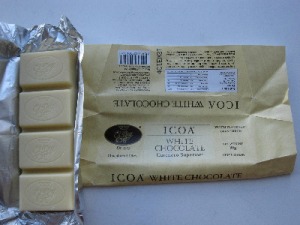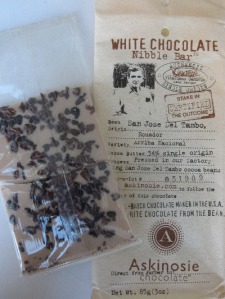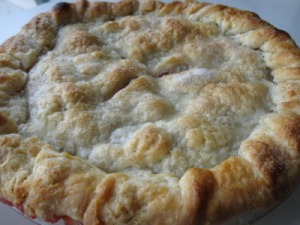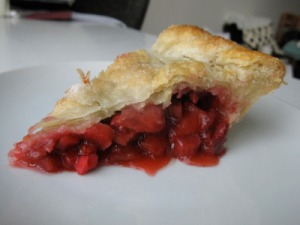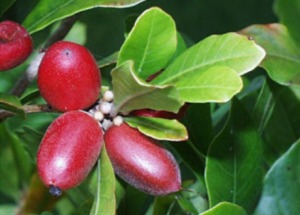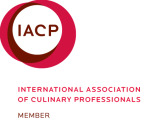Once again, I’m teaming up with the lovely folks at Xoxolat to teach some chocolate-tasting classes. We’ll go into more detail than you’d get in an introductory class, but don’t let that scare you; beginners are more than welcome, and I promise that the classes will be fun, not snooty. Nobody likes a critic—but everyone likes chocolate.
Each class features plenty of samples—and in true Xoxolat style, there will be a few surprises at the end of the night.
Participants receive an $8 store credit (must be used that evening) plus 10% of all purchases the night of the class.
WHERE: Xoxolat (2391 Burrard Street, at 8th Avenue)
WHEN: All classes run from 6:30–7:45 p.m.
COST: $20 per class, or register for all four classes for $75. (Note: due to the higher cost of samples, Chuao! costs $25.) Prices do not include HST.
REGISTER: You must register in advance. Indicate which class you’d like and someone from Xoxolat will confirm your registration. Register now.
- Chocolate 201: The Science of Chocolate
- Chocolate 201: Smackdown! Old World vs New World
- Chocolate 201: In Defense of Milk Chocolate
- Chocolate 201: Chuao!
About Chocolate 201
Chocolate 201 is a series of chocolate workshops that share the stories behind the chocolate wrapper. They’re intended for people who have some knowledge of chocolate and are familiar with how it’s transformed from bean to bar, but keen beginners are more than welcome. Expect engaging stories, interactive dialogue and the opportunity ask lots of questions.
Chocolate 201: The Science of Chocolate
Thursday, September 29, 6:30–7:45 p.m.
Cost: $20 + HST
Chocolate makers work diligently to coax the very best from their fine flavour beans. Learn how two critical steps, roasting and conching, affect the final product. We’ll also explore how playing with cacao percentage and sugar content affects flavour. Hint: higher cacao content does not automatically mean more bitterness in the bar.
REGISTER for Chocolate 201: The Science of Chocolate. Be sure to mention the name of the class when you register.
Chocolate 201: Smackdown! Old World vs New World
Thursday, October 6, 6:30–7:45 p.m.
Cost: $20 + HST
In Europe, making chocolate is a traditional that’s mostly passed through family generations. In North America, people abandon other, often lucrative, careers to make chocolate. In this old world/new world smackdown, you’ll hear stories of how people choose to make chocolate, and taste for yourself how each chocolate maker has created his own distinct style.
REGISTER for Chocolate 201: Smackdown! Old World vs New World. Be sure to mention the name of the class when you register.
Chocolate 201: In Defense of Milk Chocolate
Friday, October 21, 6:30–7:45 p.m.
Cost: $20 + HST
Chocolate snobs may dismiss milk chocolate as cloying, sweet and childish, but it’s still the chocolate of choice for most people. While regular milk chocolate clocks in at about 45% cacao content, dark milk chocolate can contain nearly 65% cacao. In this class, you’ll learn about and taste dark milk chocolate. It’s an ideal class for someone who loves milk chocolate and wants baby steps toward the dark (chocolate) side, or for someone who simply wants to learn more.
REGISTER for Chocolate 201: In Defense of Milk Chocolate. Be sure to mention the name of the class when you register.
Chocolate 201: Chuao!
Friday, October 28, 6:30–7:45 p.m.
Cost: $25 + HST
Mention the word Chuao in chocolate circles and people sit up straighter. This small region in Venezuela is known for the high quality of its beans. In 2005, Italian chocolate company Amedei won accolades from chocolate critics around the world for their single-origin Chuao bar. Learn how this small chocolate company took a snub from a well-known French chocolate maker and turned it into an award-winning chocolate bar. We’ll taste several bars made from Chuao beans, and you can see for yourself what all the fuss is about. (Due to the higher cost of Chuao samples, this class costs $25. Trust me, it’s worth it.)
REGISTER for Chocolate 201: Chuao!. Be sure to mention the name of the class when you register.

